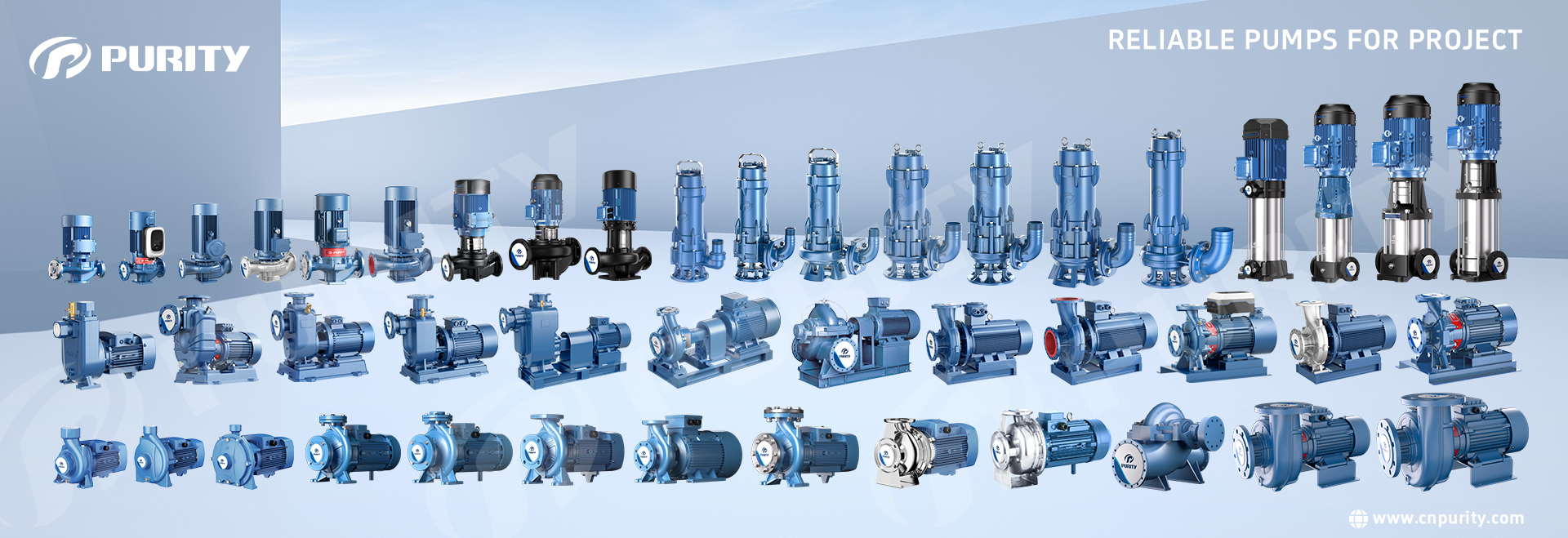Centrifugal water pumps are highly efficient and reliable fluid transfer devices, widely used in industries, agriculture, and municipal applications. Their versatility and ability to handle various fluid types make them an indispensable choice in many scenarios. This article explores the definition, working principle, performance characteristics, and applications of centrifugal pumps, with a special mention of the advanced PVE multistage centrifugal pump.
A centrifugal water pump is a mechanical device that uses rotational kinetic energy to transfer mechanical energy into fluid motion and pressure. It falls under the "dynamic pump" category, distinguishing itself from "positive displacement pumps."
· Compact Design: Ideal for installation in confined spaces.
· Continuous Flow: Delivers steady, uninterrupted flow, especially suitable for high-head, low-flow applications.
· High Efficiency: Effectively handles high-temperature and high-pressure fluids.
· Variety of Types: Available in designs such as screw centrifugal pumps, sealed magnetic pumps, and multistage pumps.

Picture|Purity water pump family portrait
The core component of a centrifugal pump is its impeller. When the pump operates, the impeller rotates at high speeds, typically between 1,750 to 5,000 RPM, drawing fluid into its center and propelling it outward through centrifugal force. The fluid’s velocity and pressure increase as it passes through the impeller and exits the pump casing.
· Volute Casing: The impeller is offset, creating a spiral-shaped outlet where fluid pressure gradually increases along the discharge path.
· Diffuser Casing: The impeller is centrally positioned, and fluid pressure increases uniformly as it is discharged in all directions.
· Impeller: The heart of the pump, available in enclosed, open, and screw-type designs for handling a range of fluids.
· Drive Mechanism: Typically powered by an electric motor or engine, transferring energy to the impeller.
Centrifugal pumps exhibit several notable performance traits that make them highly adaptable.
Centrifugal pumps can adjust flow rates using outlet valves, offering flexible operation. However, operating outside the safe flow range or the best efficiency point (BEP) may lead to issues like heat buildup, shaft deflection, or seal damage.
Head-flow curves illustrate the relationship between flow rate, head, and efficiency, aiding in selecting the appropriate pump for specific applications.
· Efficient for low-viscosity fluids like water or light oils, with an ideal viscosity range of 0.1 to 200 cP.
· High-viscosity or dense fluids such as chemicals or fertilizers demand greater power, necessitating higher horsepower motors.

Picture|Purity PVE Multistage Centrifugal Pump
Centrifugal pumps are used across diverse fields due to their ability to handle a wide range of fluids. Common applications include:
· Industrial: Transporting chemicals, petroleum products, coolants, and liquefied natural gas.
· Agriculture: Irrigation systems and fertilizer solutions.
· Municipal: Wastewater treatment, drainage, and water supply systems.
· Circulator Pumps: Heating, air conditioning, and ventilation systems.
· Sealed Magnetic Pumps: Safe handling of hazardous fluids like acids and solvents.
· Multistage Pumps: High-pressure applications.
· Sewage Pumps: Processing waste and slurry containing solids.
· Cryogenic Pumps: Handling coolants and liquefied gases.
The PVE multistage centrifugal pump stands out with remarkable innovations:
1. Improved Performance: Delivers 10-30% higher head compared to competitors under the same power and flow conditions.
2. Noise Reduction: Enhanced impeller design reduces overall noise levels by 20%.
3. Durability: Reinforced front bearings increase axial load capacity, ensuring longer service life and better reliability.

Picture|Purity PVE Multistage Centrifugal Parameters